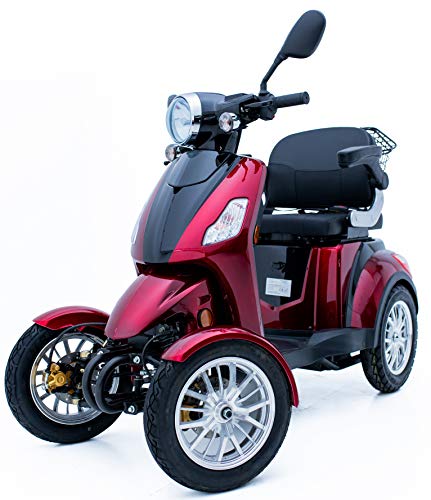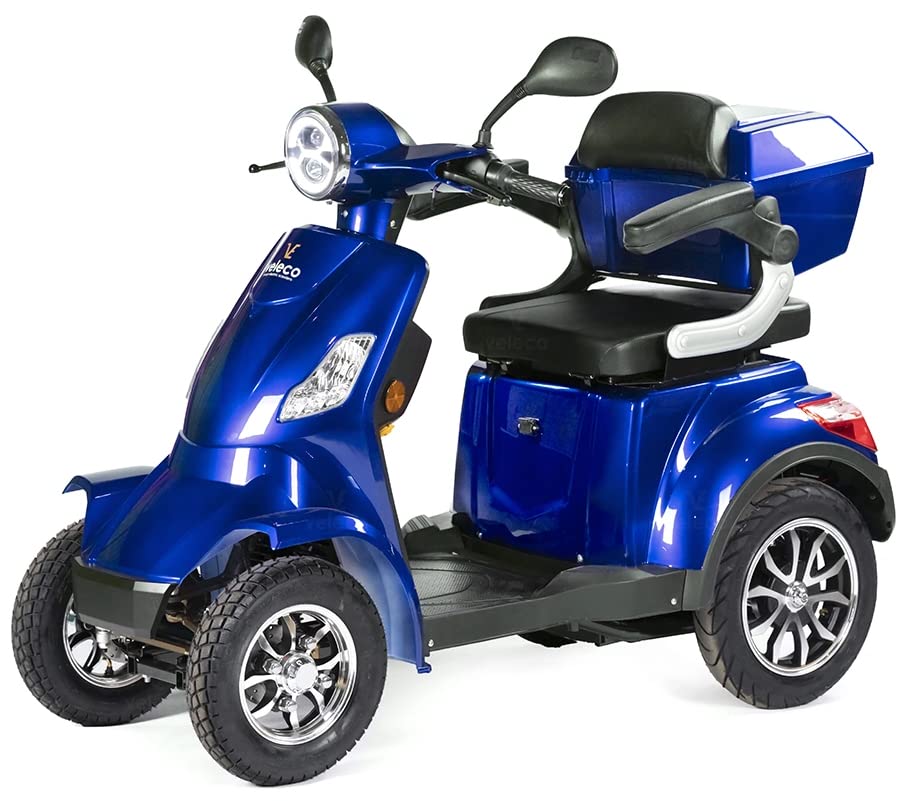5 Urban Mobility Solutions Instructions From The Professionals
페이지 정보
작성자 Hildred Alfaro 작성일 24-12-24 21:18 조회 6 댓글 0본문
 Urban Mobility Solutions
Urban Mobility SolutionsCities face major challenges in combating air pollution, congestion as well as accessibility and sustainability. Urban mobility solutions leveraging technology advancements could enhance the quality of life, foster economic vitality and reduce carbon footprint.
To implement these solutions however requires collaboration across the entire system of mobility. A city-centric and citizen-centric approach is crucial. Mercedes-Benz experts work with cities and other stakeholders to design a tailored solution for each city.
Congestion
 Urban mobility planning has for a long time been focusing on the issues of traffic congestion. The time spent in traffic reduces individual productivity and decreases the efficiency of cities overall. As a result, cities have to keep pace with technological advancements in transportation while also addressing the need to address the effects of growing populations and aging infrastructure.
Urban mobility planning has for a long time been focusing on the issues of traffic congestion. The time spent in traffic reduces individual productivity and decreases the efficiency of cities overall. As a result, cities have to keep pace with technological advancements in transportation while also addressing the need to address the effects of growing populations and aging infrastructure.Urban transportation systems should be safe and accessible while decreasing noise, pollution and waste. Additionally, cities must address the challenges of parking, traffic congestion management, and decarbonization.
There are a variety of ways to tackle traffic congestion, but in order to be successful, all parties must take responsibility for the issue. It starts with acknowledging that congestion is not just an inconvenience for commuters as well as a financial cost for businesses and the overall economy. This is why it is crucial to use accurate, high-resolution data that captures day-to-day variations in travel times to identify the root causes of congestion and the most effective solutions.
It is crucial to inform the public and business owners about the impact that congestion can have on their business. Clear and consistent communication will help to build awareness of the issue and educate the public about solutions, and motivate business leaders to advocate congestion reduction strategies.
One option is to increase the capacity of roads. However, this can be expensive and is often subject to various restrictions that include environmental and land-use regulations. Other alternatives include promoting alternative methods of transportation, like taxi hailing and bikeshare apps, or even implementing carpooling and congestion pricing. Parking systems can also be inefficient and cause congestion. Utilizing smart parking solutions, you can maximize space utilization and shift trips away from congested roadways.
Aging Infrastructure
Cities and towns across the nation have to contend with traffic congestion and safety issues due to aging infrastructure. Bridges and roads are in danger as traffic volumes continue to rise putting both business and residential owners at risk. Also, travel times increase.
The deteriorating infrastructure for transportation is a problem that can't be solved by technology alone. The Oregon Department of Transportation has invested in new transportation projects, highways and safety improvements to reduce congestion and modernize the infrastructure. These investments will help to ensure that the Portland region continues to grow for generations to come.
As the pace of urbanization increases and increase, many countries are experiencing an acute shortage of affordable housing and the demand for sustainable solutions in mobility is growing. Innovative solutions like e-scooters, e-buses, and bike sharing are being used to reduce the effects of climate change and reduce carbon emissions. These new lightweight electric mobility scooter solutions help make it easier for people with disabilities, a growing concern among many citizens.
To comprehend the impact of aging infrastructure on the future of urban portable electric mobility scooters for adults solutions, this study uses a systematic literature review (SLR) to study the work of 62 scientists and forecast the evolution of different scenarios through 2030. The gradual growth of automated and shared mobility is predicted to be most important in changing the way we move. The scenario of 'Mine is yours is the most popular (35 percent of the visions) followed by 'Grumpy old transport' (18%) and 'Tech-eager mobility' (17 percent). Progressive legislation and supportive policies are essential to make these new mobility options widely accepted.
Inequality
Urban mobility solutions should not just improve the flow of traffic and reduce emissions, but they should also be able to reduce the amount of carbon dioxide and be socially and economically feasible for all. Transportation is often one of the largest household expenses, and these expenses can be particularly costly for those with low incomes. The high cost of car payments, fuel costs, maintenance and insurance can create a major financial burden on families, preventing people from obtaining services or jobs, as well as education. Additionally long commutes can have a negative impact on the health of residents.
Public transportation is an attractive alternative to private vehicles, however, many cities do not have the infrastructure needed. The aging public transportation system was designed to serve much smaller populations and needs significant investment to modernize. A lack of funding and outdated technology, could also hinder the development of new service.
In addition, congestion increases the number of pollutants in the air and can pose a threat to public health. The resulting poor air quality can worsen respiratory conditions and reduce the overall quality of living. With the help of effective urban mobility planning excessive congestion could be avoided by expanding and improving the existing infrastructure.
The increased capacity of public transport will cut down on travel time and make it more accessible to all people, including those disabled or infirm. Moreover, it will help lessen the burden on families that have expensive vehicles and free up valuable parking spaces that can be used to better serve.
In the future, increasing the use of alternative transportation modes can have a significant impact on inequality. As density increases within cities, AAPI-White and Black-White commuting inequality decreases, while women's commuting time declines relative to men's. This suggests that increasing density forces AAPIs to sacrifice the same salaries for longer commutes, which in turn forces Blacks to work further and women to be less likely to get jobs that are compatible with their qualifications and capabilities.
Air Quality
Research has shown that there is a direct link between exposure to harmful pollutants and health. Traffic congestion, fuel and diesel vehicle usage as well as other factors can result in high levels of particulate (PM2.5 and PM10) and gases such as nitrogen oxides, sulphur dioxide volatile organic compounds, and carbon monoxide. These pollutants can be harmful and contribute to climate changes.
The exposure to these pollutants can result in heart attacks as well as lung irritation, asthma and delayed development in children and impairment of cognitive functions. Additionally, they may contribute to ozone pollution and greenhouse gas production, as well as the urban heat island effect which can cause higher temperatures in cities.
The development of public transportation is an effective way to improve the quality of air and promote active four wheels electric mobility scooter. can reduce the emissions of transport including greenhouse gases. The reduction in emissions from urban transport can also help achieve the national, international, and local climate change goals.
In this regard smart mobility solutions could help commuters choose folding electric mobility scooters for adults and low-emission vehicles. Additionally they can provide information about safe biking and walking routes. They can also encourage ridesharing services that help to reduce the number of vehicles on the road and the pollution that comes with it.
In a recent paper, we simulated the impact of SUMPs (Sustainable Urban Mobility Plans) in 642 cities in Europe. Our findings demonstrate that SUMPs have a significant effect on the modelled "urban background concentrations" of PM2.5 and NO2, with reductions in these substances amounting to around 7%. It is important to keep in mind that these findings only take into account the emissions from the transport sector and urban background concentrations. Other benefits of SUMPs such as reduced energy consumption, street-level concentrations, and electro-mobility options are not considered in this study, and should be examined in future studies.
Urban mobility solutions require an ecosystem approach, which involves multiple stakeholders. They must take into account technology, equity and sustainability and be tailored to each city's unique context. While new technologies can help urban mobility systems, they must be able to integrate existing infrastructure, promote bike share and public transport schemes, and increase security.
Logistics is the process of moving people and goods in a city, and is the foundation of urban mobility. It is crucial for reducing congestion, maximizing time on daily commutes and improving travel accessibility. The development of new technology such as autonomous vehicles (AVs), has a direct effect on city logistics. It will also make the transportation sector more effective. This is due to the need for human drivers, decrease fatal accidents caused by driver errors and increase traffic flow.
Despite these benefits, logistics is complicated by the fact that it involves a variety of different stakeholders, each having their own goals, budgets and legacy technology. It's therefore difficult to ensure the consistent execution of a project. It can also be difficult to scale up and transfer solutions from one city into another since each has their particular requirements.
To address these challenges cities must encourage technological innovation and create flexible, efficient logistical operations that can grow to keep pace with technological advancements. This can be achieved by promoting green freight management, integrating eco-friendly urban logistics planning into SULPs and SUMPs and examining the possibility of air electric mobility scooter adult using drones. It is also crucial to promote collaboration between public transportation agencies, private businesses and logistics service providers. This will optimize transit and make cities more flexible and improve the quality of life for the citizens.
- 이전글 Guide To Pushchair 3 Wheels: The Intermediate Guide Towards Pushchair 3 Wheels
- 다음글 Why Is Small Two Seater Fabric Sofa So Popular?
댓글목록 0
등록된 댓글이 없습니다.






